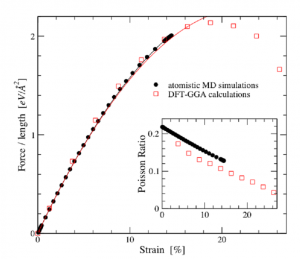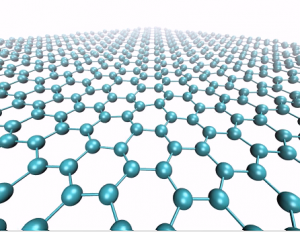Modeling
- font size decrease font size increase font size
Atomistic simulations
Microscopic Molecular Dynamics and Monte Carlo simulations are performed in single- and multi-layer graphene. The applied force fields result either from home-made potentials, obtained through first principles methods or from widely used empirical potentials such as AIREBO.
Phonon dispersion curves at various temperatures and strain levels are calculated providing a fundamental understanding of graphene’s Raman response under the corresponding perturbations.
Graphene monolayers under various loads, like uniaxial tension, hydrostatic tension, or shear stress, are investigated, using both molecular dynamics simulations and first principles' methods. Stress-strain curves and elastic constants, such as, Young modulus, Poisson's ratio, bulk and shear modulus, are calculated. The results are compared with available experimental estimates. The mechanical properties of graphene nanoribbons are also considered, as well as the effect of various types of defects on graphene’s mechanical behavior.
 Modelling at the continuum level
Modelling at the continuum level
At the continuum level, we model graphene sheets by using a hyperelastic second gradient surface model in order to capture bending effects. Taking into account the symmetry of graphene, we lay down the most generic anisotropic expression of an energy function capable to determine the stresses as well as the couple stresses at the continuum level. The theory is tested against finite element calculations for simple deformation histories and is compared with molecular dynamics as well as ab-initio approaches.

